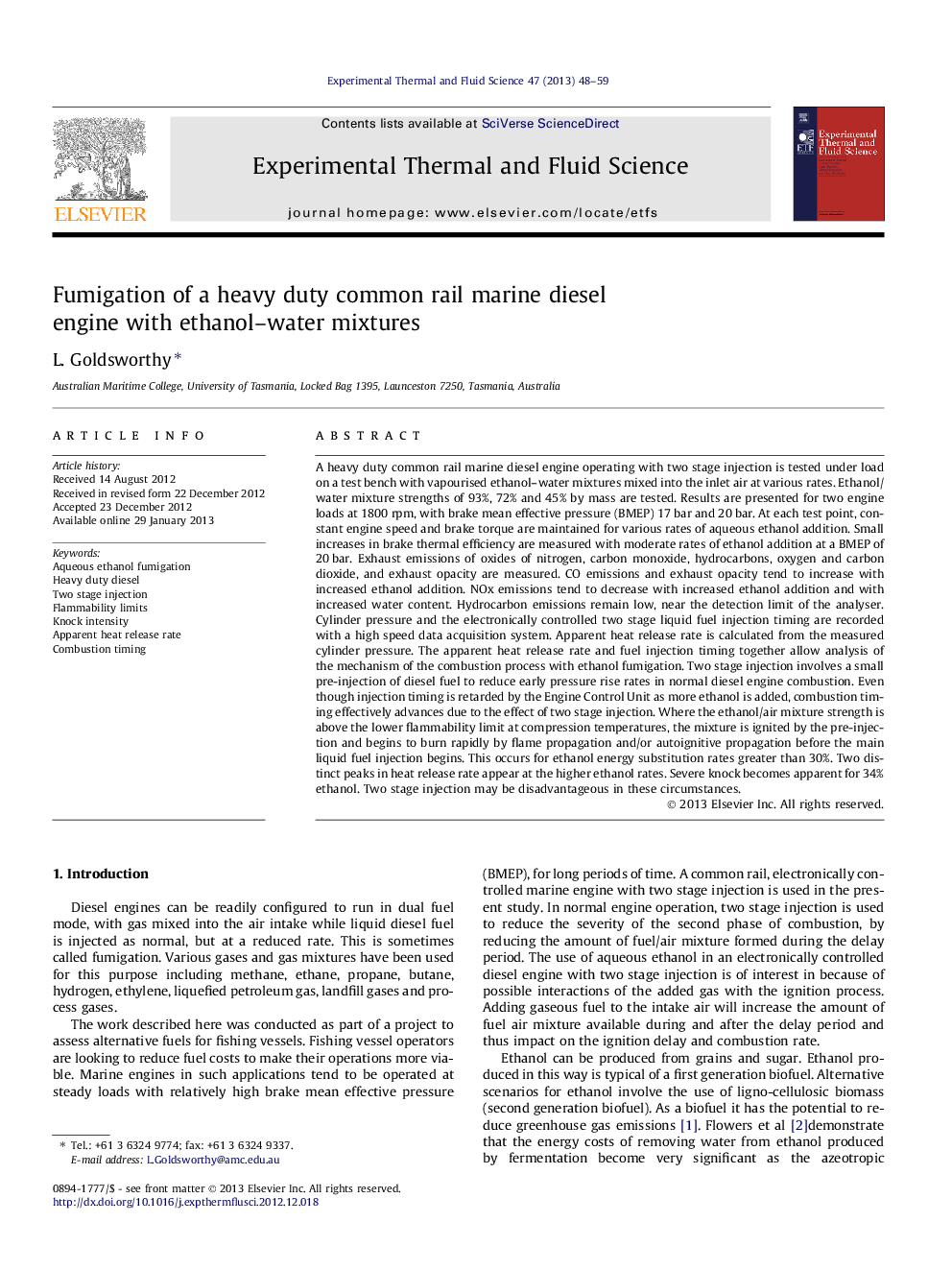| Article ID | Journal | Published Year | Pages | File Type |
|---|---|---|---|---|
| 651466 | Experimental Thermal and Fluid Science | 2013 | 12 Pages |
A heavy duty common rail marine diesel engine operating with two stage injection is tested under load on a test bench with vapourised ethanol–water mixtures mixed into the inlet air at various rates. Ethanol/water mixture strengths of 93%, 72% and 45% by mass are tested. Results are presented for two engine loads at 1800 rpm, with brake mean effective pressure (BMEP) 17 bar and 20 bar. At each test point, constant engine speed and brake torque are maintained for various rates of aqueous ethanol addition. Small increases in brake thermal efficiency are measured with moderate rates of ethanol addition at a BMEP of 20 bar. Exhaust emissions of oxides of nitrogen, carbon monoxide, hydrocarbons, oxygen and carbon dioxide, and exhaust opacity are measured. CO emissions and exhaust opacity tend to increase with increased ethanol addition. NOx emissions tend to decrease with increased ethanol addition and with increased water content. Hydrocarbon emissions remain low, near the detection limit of the analyser. Cylinder pressure and the electronically controlled two stage liquid fuel injection timing are recorded with a high speed data acquisition system. Apparent heat release rate is calculated from the measured cylinder pressure. The apparent heat release rate and fuel injection timing together allow analysis of the mechanism of the combustion process with ethanol fumigation. Two stage injection involves a small pre-injection of diesel fuel to reduce early pressure rise rates in normal diesel engine combustion. Even though injection timing is retarded by the Engine Control Unit as more ethanol is added, combustion timing effectively advances due to the effect of two stage injection. Where the ethanol/air mixture strength is above the lower flammability limit at compression temperatures, the mixture is ignited by the pre-injection and begins to burn rapidly by flame propagation and/or autoignitive propagation before the main liquid fuel injection begins. This occurs for ethanol energy substitution rates greater than 30%. Two distinct peaks in heat release rate appear at the higher ethanol rates. Severe knock becomes apparent for 34% ethanol. Two stage injection may be disadvantageous in these circumstances.
► Combustion in a heavy duty common rail diesel engine fumigated with aqueous ethanol. ► Analysis of heat release rate, ethanol–air flammability and injection timing. ► Suggested combustion mechanism for severe knock at high rates of ethanol addition. ► Two stage injection may be disadvantageous at high fumigant rates. ► Decreased NOx emissions, increased CO emissions and exhaust opacity.
